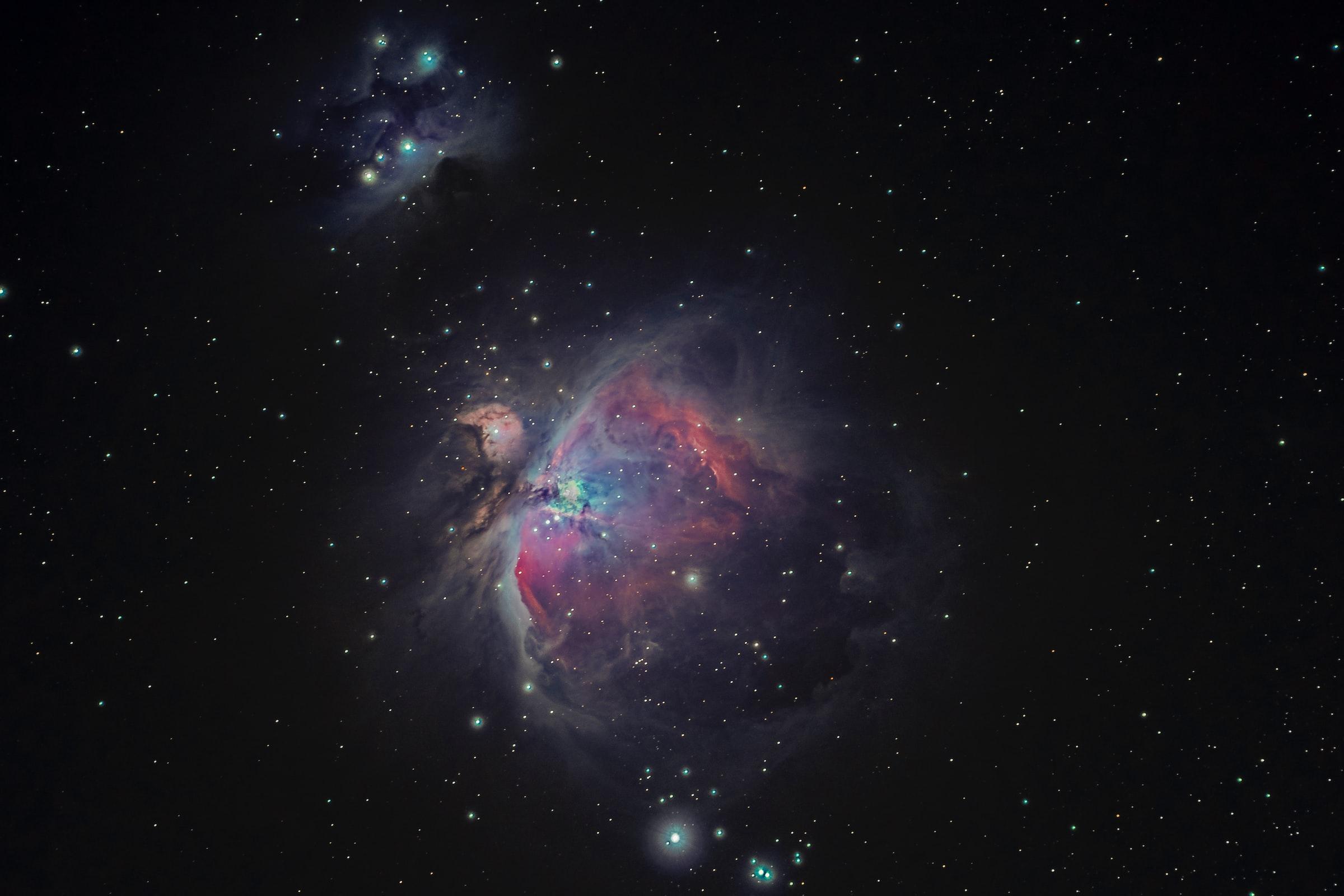
MUSTMultiplexed Survey Telescope
Scientific Objectives
Scientific Background
In the past ten years, astrophysics provided some of the most visible scientific breakthroughs. From the identification of a super-massive black hole at the center of the Milky Way to the establishment of accurate cosmology, from the discovery of exoplanets to the detection of gravitational wave signal from the merger of compact objects, over and over again, our Universe proves that it is indeed the final frontier of physical exploration. In the next decade, a series of ground-based and space imaging surveys will, once again, reshape the landscape of astrophysics and cosmology. Together, these surveys will provide increasingly deep images with much improved spatial and temporal resolution that will depict an unprecedentedly profound and vivid Universe. Meanwhile, such a large dataset also brings numerous challenges to astrophysical research. One of the most outstanding challenges is the lack of sufficient spectroscopic follow-up capability on the ground. The spectrum of an object is its beacon in the cosmic flow, the fingerprint of its physical nature, and the password toward understanding its origin. Only through spectroscopic observation can we generate a 3-dimension map of our Universe, estimate the age of a remote galaxy, analysis the chemical composition of a nearby star, measure the accretion of a super-massive black-hole, and identify the nature of a rare transient object. Since 2000, the Sloan Digital Sky Survey (SDSS) has repeatedly demonstrated the unlimited scientific potential of large-scale "spectroscopic census." The Galactic survey performed by the Large Sky Area Multi-Object Fiber Spectroscopic Telescope (LAMOST) has presented us with the largest-ever spectroscopic database of Milky Way stars. Moreover, the ongoing survey of the Dark Energy Spectroscopic Instrument will constrain our cosmological model using the baryon acoustic oscillations (BAO) signature with unparalleled accuracy. However, despite these efforts, future goals of astrophysics and cosmology put forward much more demanding requirements for the next generation spectroscopic survey: large aperture telescope becomes. The MUltiplexed Survey Telescope (MUST) is born to tackle these challenges. Under the current design, the first-generation survey instrument of MUST will excel in the pursue of a wide range of unique missions, including but not limited to: •Map the distributions of galaxies to higher redshift and smaller physical scale. Taking advantage of such a detailed 3D map, we will study the distribution of dark matter and interrogate the nature of dark energy. •Investigate the rising and fall of star formation in galaxies in the last 10 Gyrs, understand the star-formation and mass-assembly history of different populations of galaxies. •Utilize the galaxies within galaxy clusters or groups to portray the most massive dark matter halos in our Universe and use this unique cosmological probe to trace the evolution of dark energy and exam the theory of gravity. •Provides the most complete and thorough high-resolution spectroscopic census of our neighbors in the Milky Way. Establish a detailed chemical and kinematic archive to facilitate the search of Earth 2.0. •Observe an unprecedented large sample of stars in the Milky Way's stellar halo or satellite dwarf galaxies to reconstruct our own Galaxy's early history and probe the nature of dark matter through its small scale structure. •Measure the accretion rate and mass of super-massive black holes (SMBHs) in a galaxy sample that is one order of magnitude larger than the existing one. Improve our understanding of the growth of SMBH and its impact on galaxy evolution. •Efficiently confirm and follow-up the rare and valuable transient targets such as the electromagnetic counterparts of gravitational wave events, the tidal disruption events, and the high-redshift Type Ia supernovae.
Subfields
🧿Cosmology 🧿Galaxy clusters, intergalactic medium 🧿Galaxy formation and evolution 🧿Near field cosmology 🧿Galactic and stellar astrophysics 🧿Active galactic nuclei 🧿Time-domain astrophysics 🧿Exoplanets 🧿Solar system
Scientific Objectives
The main scientific goal of MUST is to create a more precise cosmology model. To achieve this, MUSTT will perform surveys of large-scale structures at high redshifts to better understand the origins and evolution of dark energy, inflation models, and neutrino mass. MUST plans to conduct redshift surveys of galaxies on the non-linear scale to understand the galaxy-halo connection better. MUST will also utilize multiple observational probes, ranging from galaxies to stars, to shed light on the nature of dark matter. MUST will launch unprecedentedly large surveys of galaxies & Active Galactic Nuclei (AGN) to significantly expand our knowledge about galaxy formation & assembly in different environments, the co-evolution of galaxies and supermassive black holes, and the physical picture of the extragalactic eco-system. In the Milky Way and within the near-field Universe, MUST’s stellar spectroscopic surveys can advance Galactic archeology to the border of our galaxy to uncover its assembly & star formation history. Additionally, MUST will also conduct a more detailed “census” of the Local Group. MUST strives to conduct extensive time-domain spectroscopic surveys. These surveys will not only help us depict the dynamic Universe, but they will also help us explore the synergies with other multi-messenger projects. MUST is a versatile and upgradeable spectroscopic platform with long-term potential in contributing to various interesting fields in astronomy, including exoplanets and Solar System objects.
